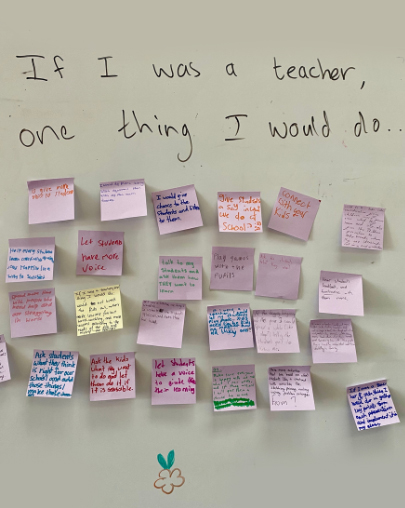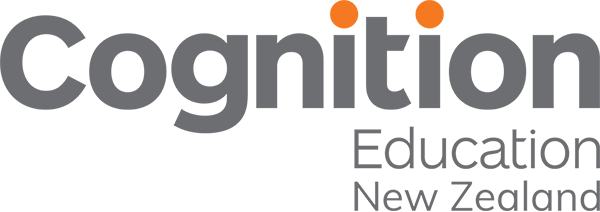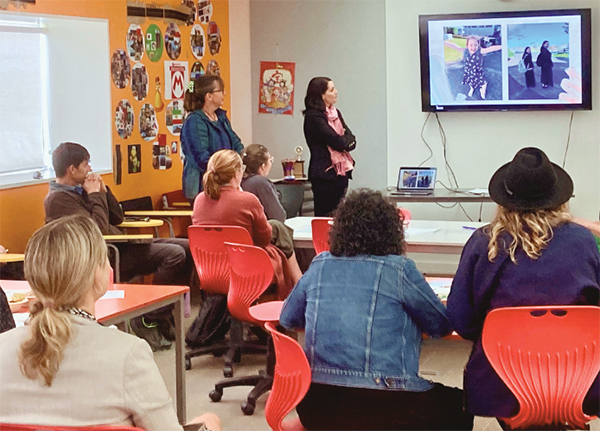Originally published by Education Gazette.
A North-West Auckland kāhui ako is breathing life into its name – Whiria te Tangata. Through weaving people together while also focusing on learner agency, collective teacher efficacy, and culturally responsive pedagogies, the Community of Learning is seeing real and tangible results.
Whiria te Tangata Kāhui Ako has a collaborative and people-focused approach to education and it’s boosting teacher efficacy, strengthening learner agency, and fostering environments where learners can not only succeed but flourish.
The kāhui ako consists of a network of 12 schools and eight early learning services who have recently joined, in an initial phase of forming connections with other local contributing early learning services.
It is guided by five core drivers:
- Building teacher efficacy in collaborative ways of working
- Embedding culturally responsive pedagogy
- Enabling learner agency
- Strengthening learning connections with parents, families, whānau, ākonga and teachers
- Developing local curriculum reflecting the environmental context and economic opportunities of the community.

The Community of Learning was formed in 2016 and has evolved since the beginning, but the bones and core values have remained, says Waitakere Primary School’s Ashleigh Stewart, who is the longest serving across school lead in the kāhui ako.
“Our kāhui ako was very big on wanting to do things better together, but we don’t want to all be the same. We don’t want to ‘vanillarise’ what schools are doing.
“We’re unique, we’re important, we bring value as we are. But what we’re doing is shaping the practice of our community together, and that was a key thing,” she says.

Engaging questions posed to student researchers.
Shared Framework
A core feature of Whiria te Tangata Kāhui Ako is the development of two research-based frameworks to measure teacher efficacy and learner agency, which aligned with their goals to develop these areas.
“We particularly wanted to have those as our goals but make sure that culturally sustaining pedagogies were weaved through the rubrics,” says Ashleigh.
“There’s definitely still a lot of work that needs to be done with those as we learn more.”
The Collective Teacher Efficacy (CTE) and The Learner Agency frameworks enable school leaders and kaiako to evaluate, gather evidence and track their progress.
“If we’re focusing on our drivers, how do we know if we’re making progress?” asks Danielle Myburgh, an across school lead from Hobsonville Point Secondary School.
“Yeah, how do we show that progress if we’re not using standardised tests and things like that?” adds Amy Croxford, also an across school lead from Hobsonville Point.
The rubrics are based on New Zealand-based research and link research statements with development stages (establishing, developing, proficient and integrated). Amy says they are designed to be adapted to each individual school.
Danielle adds they did not know how much they needed tNITSe rubrics until they had them.
“As we’ve progressed, we’ve realised that what they’ve done is give our kāhui ako, 12 schools, a common language to talk about which best practices actually make a difference,” she says.
Because the rubric is grounded in “really solid research” they’re making a difference, explains Danielle.
“When our schools dig into them and start making sense of them, and start using the language appropriately, it actually makes a big difference in highlighting, spreading and sharing some of these best practices that make an impact.”
Amy says the research hasn’t stopped.
“We went to an afternoon a couple of months ago with Russell Bishop and we’ve now developed PLGs for the within school leads so they’re a part of a group unpacking each strand of the learner agency rubric. We’re really making sure we have up-to-date research.”

Student researchers foster inter-school connections.
NITS
NITS is a tool developed by Whiria te Tangata to get members of the kāhui ako scratching their heads – metaphorically, not literally.
It is an acronym that stands for ‘Need, Impact, Time, So’ which is designed to encourage deeper thinking.
Danielle says NITS was born after reflecting on within school lead videos which summarised their mahi for the year, and asking “what are we doing to help them deepen their inquiries?”
“We’ve developed a range of resources, tools and coaching conversations around that acronym that has had a significant impact on the quality of the inquiry,”
she says.
“When they talk now about their inquiries, it’s much more focused on student needs.”

Packed house: Within school leads, across school leads, principals and fellow student researchers attentively listen as students present their research into learner agency.
The Impact
The impact of Whiria te Tangata Kāhui Ako’s collaborative and people-focused approach to learning and teaching is made clear through the inquiry presentations at the group’s 2023 Showcase.
Investigation topics ranged from collective teacher efficacy and the efficacy of collaborative spaces to school transitions.
“It’s amazing. They’ve said in their evidence that teachers within their school are feeling more confident and understanding learner agency, why it’s important, and what it looks like in a classroom. I don’t know how much of that they would have done without the work of the kāhui ako, or at least being able to critique off one another,” says Ashleigh.
Danielle says hearing from the student researcher group has also been important.
“They’re a group of mostly Year 6 and 7 students who’ve also been investigating all these aspects of learner agency and who were able to contribute to all of the teachers’ presentations about how these critical things affect them. Their voice is really apparent and is now present, which is a shift from where we started.”
Danielle says she believes the kāhui ako has contributed a lot to the community including stronger relationships between schools and a collaborative approach to navigating problems.
“I remember just before all the Covid lockdowns hit, sitting in the room with the principals, and them being able to talk to each other about how they’re going to navigate this new curvy road ahead of us. That’s something that before the kāhui ako wouldn’t have happened,” she says.

The student researcher group present their findings, focusing on learner agency.

